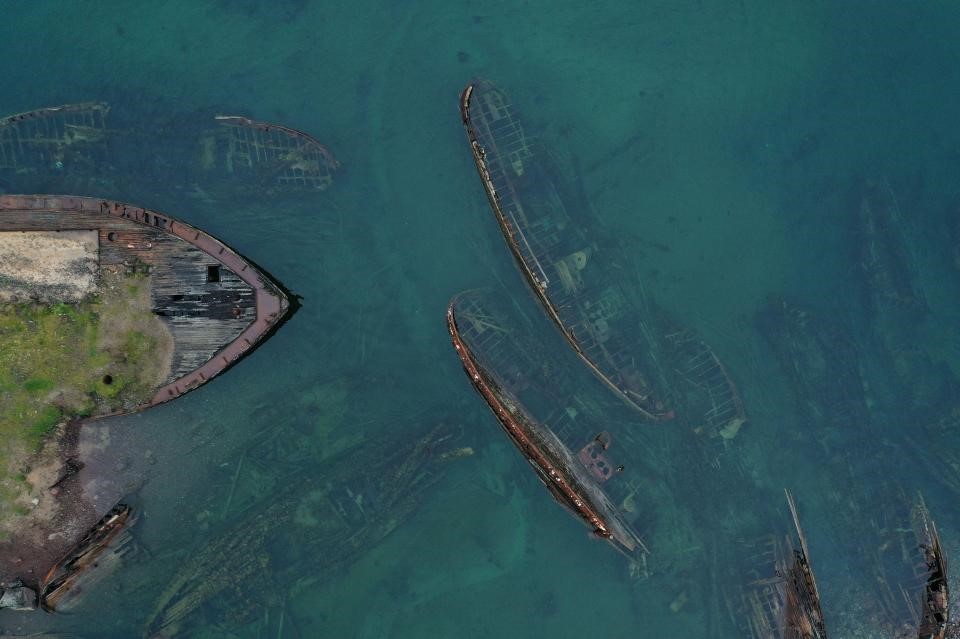Experts warn of a “ticking timebomb” lying beneath the icy waters off the Russian Kola Peninsula and Novaya Zemlya (Russian archipelago), calling it an underwater nuclear graveyard.
For decades Russia has been using the Barents and Kara Seas to dump waste. During the 1960’s and 70’s they dumped several hundred containers of solid radioactive waste in the area. Today, it is believed there are over 17,000 of these containers scattered along the seabed, of which are 18 vessels and 14 reactors. Many of these are relatively close to the surface.
The Russian Shirshov Institute of Oceanology estimates approximately 900 of these radioactive containers lie within the Blagopoluchie Bay. In the past, Blagopoluchie Bay was generally covered with ice, but now as more and more of this area is becoming ice-free, new species of fish and crabs are moving into the area. The institute fears that the leaking radioactive waste could infect seafood and contaminate oil fields.
Finland’s former Minister of Foreign Trade and European Affairs Jari Vilén said: “It’s a horrible, horrible legacy of the Soviet Union that’s been left at the bottom of the ocean.” One example is the K-159 submarine. She sank without warning in the Barents Sea while under tow for scrapping. This resulted in ~ 800kg (1,760 lbs.) of nuclear fuel lying beneath busy fishing and shipping lanes just north of Murmansk. This area of the Barents Sea is the richest cod fishery location in the world, and it is also an important habitat of haddock, red king crab, walruses, whales, polar bears, and many other animals. Note: Russian nuclear submarine reactors are initially fueled with highly enriched uranium, 21 to 45%, with a few as high as 90%. After years of operation, the spent fuel contains unburned enriched uranium, along with plutonium and other radioactive fission products.
According to Hilde Elise Heldal, a scientist at Norway’s Institute of Marine Research, if all the radioactive material from the K-159 was released in a single “pulse discharge” it would increase the Cesium-137 levels of the cod fish within this area at least 100 times. She noted that although 100 times seems high, it is below international limits. It could still make it more difficult for fisherman to sell their catch, as evidenced by the reaction to Japanese seafood after Fukushima.
Another example is the K-278 Komsomolets. It met its fiery demise in the Barents Sea on April 7,1989, lying ~180 kilometers southwest of Norway’s Bear Island and ~350 kilometers northwest of Norway’s mainland coast. Thirty years later, a Norwegian scientific expedition found the levels of Cesium-137 in the seawater there at 800,000 times higher than the levels of Cesium-137 in uncontaminated seawater. Monitoring in this area has occurred annually since 1990, and abnormal Cesium-137 levels were not detected until 1993. Researcher Heldal stressed that there was no cause for alarm because any pollution is quickly diluted, as evidenced by no radiation detected just a half-meter away. Heldal said, the most dangerous scenario would be to try and raise the submarine – risking leakage at the surface.
Yet another example is the K-27, known as the “Golden Fish” by her sailors, because of its high cost. In 1968, a radiation leak from one of its two liquid-metal reactors occurred while they were on a voyage in the Arctic and exposed nine sailors to fatal doses of radiation. In 1981/1982 the navy filled the reactor with asphalt and scuttled it east of Novaya Zemlya Island in the Kara Sea, in only 108 feet of water – much too shallow based on the depth required by international guidelines (at least 12 miles from the nearest land and in water at least 300 feet deep).
Many experts are worried that the thousands of tons of nuclear waste, they claim equates to 6.5 Hiroshima’s, coupled with the more highly concentrated nuclear rods on some of the submarines may implode underwater, leading to a “Hiroshima-esque” event. The three submarines discussed above (K-27, K-159, and K-278) are thought to be the highest risk.
Thomas Nilsen, the editor of The Barents Observer, told Outrider: “We can’t let those reactors just sit there. We know sooner or later radionuclides will leak out”. Nilsen describes this area as “Chernobyl in slow motion on the seabed”.




